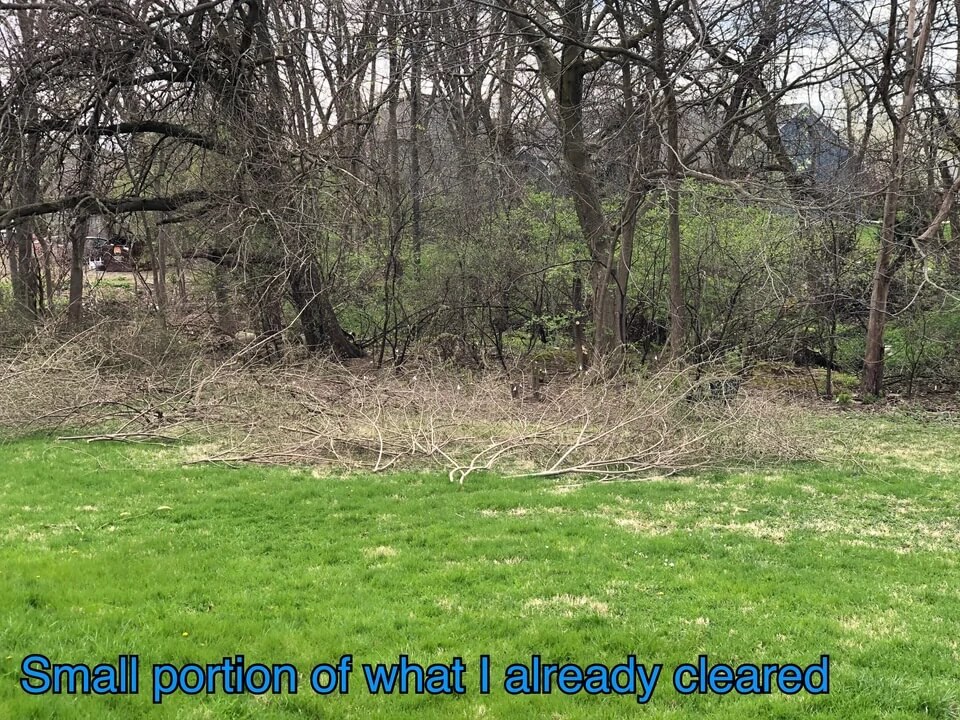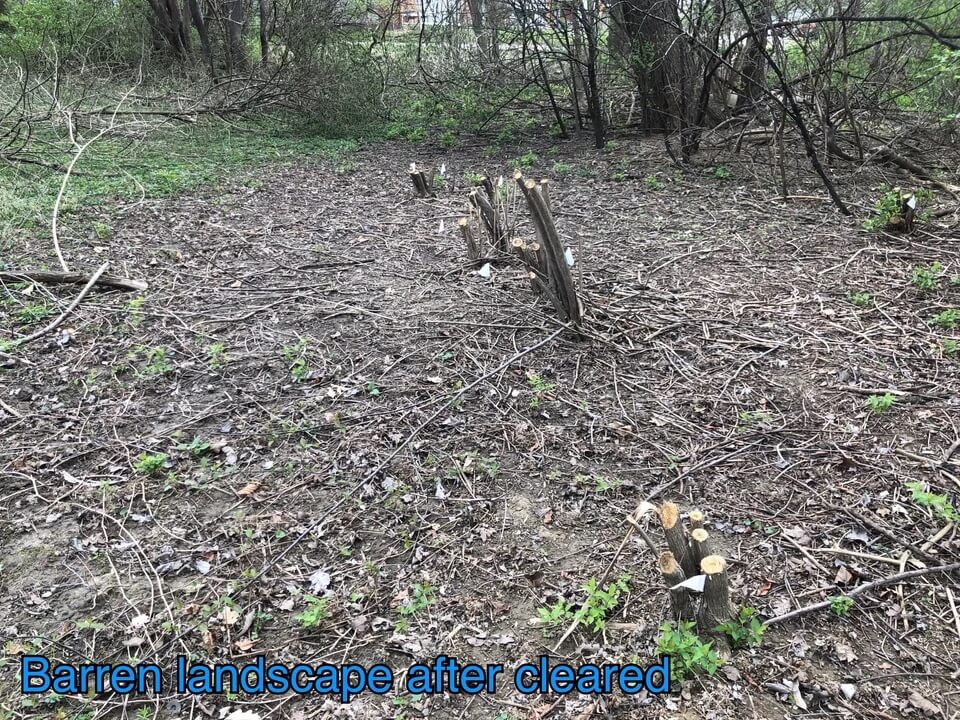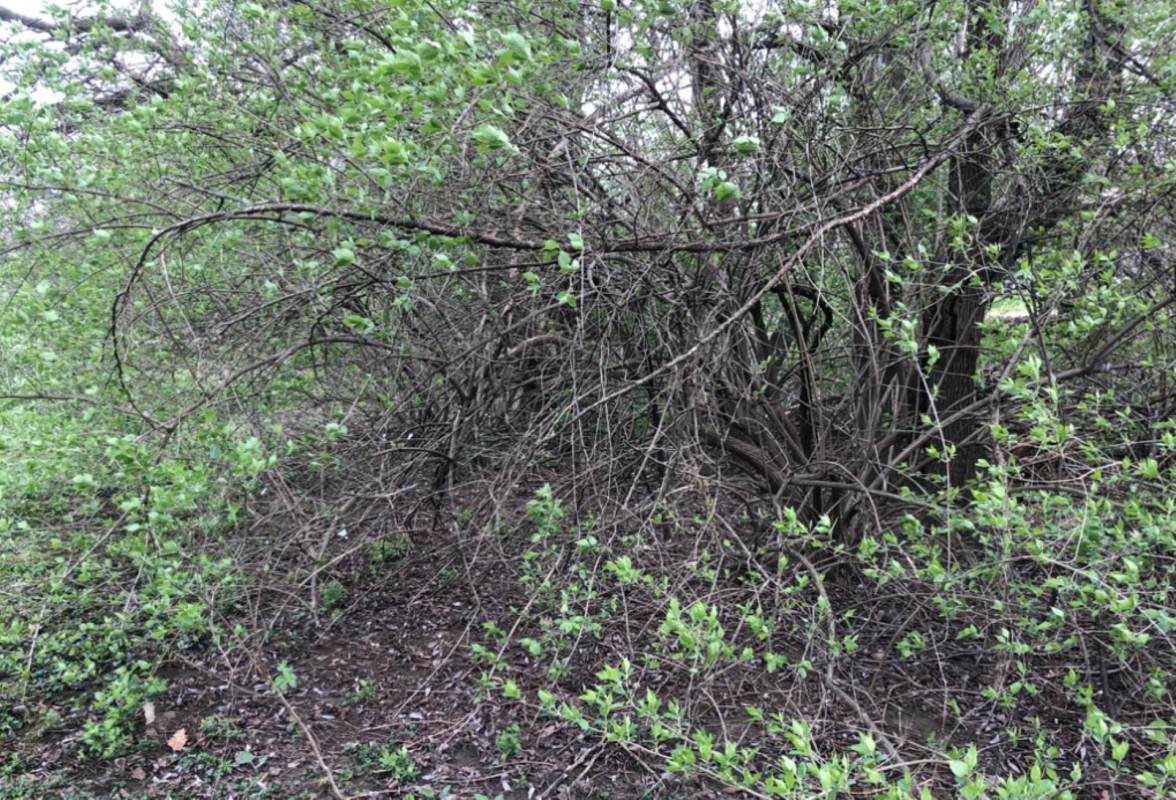One homeowner's dramatic photos proved how much damage just a few invasive plants can do.
Invasive species are living things that aren't native to an area. But being out of place isn't enough; they also have to thrive in the new location, so much so that they start edging out native species.
They might eat or outcompete native species, or reproduce out of control with nothing to prey on them. Regardless, they throw off the balance of their new ecosystem and completely take over.


There are several honeysuckle varieties that are invasive in the U.S. (though there is a native plant also referred to as "bush honeysuckle") — and this Redditor had to contend with one of the invaders. "What to replace bush honeysuckle with?" they asked, sharing several photos of a yard that was once overrun by the plant in the r/NativePlantGardening subreddit.
To be sure the species of honeysuckle they were contending with was indeed invasive, they referenced an article by the University of Illinois Urbana-Champaign's College of Agricultural, Consumer and Environmental Sciences: "[Invasive] bush honeysuckle can be identified due to their opposite leaf arrangement, white spring flowers along the stem, and pairs of typically red fruit in the fall. The center of the stem is hollow, whereas Illinois' single native honeysuckle species has a solid stem."
In the first photo, labeled "area not yet cleared," the honeysuckle forms a thicket that tangles with surrounding tree branches. While the leaves aren't dense, they've still blocked out most other plants from growing below.
"While we were not paying attention bush honeysuckle has taken over the understory of our woods and a good portion of the fence line," the original poster said in a comment. "I've gotten pretty good at identifying it, the fact that it's the only thing currently green helps, and will be pulling the roots I can. We are a little hesitant to use herbicides as we have not done so on the property in the 16 years we've owned it."
The second photo shows honeysuckle branches laid out on the lawn after being cut. The third, labeled "barren landscape after cleared," shows five honeysuckle stumps and the huge swath of bare ground around them where nothing else could grow.
That left the original poster with a dilemma. "One thing that seems to be glanced over in my research is what to do once it's gone," they said. "One video mentioned just letting nature take back over or you could be a little more intentional about it. Does anyone have any suggestions? The woods have provided us with wonderful privacy and we'd like to get that back as soon as possible."
"If you're interested in bolstering the ecosystem, contact your extension," said one commenter. "They'll be able to give you a list of appropriate native plants and groundcovers for your zone."
Planting natives is great advice because they need little water or maintenance and are great for local pollinators.
Join our free newsletter for easy tips to save more, waste less, and help yourself while helping the planet.









